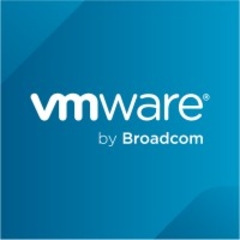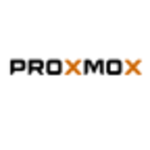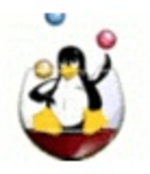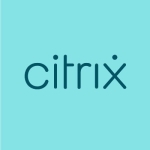What is our primary use case?
Our main use case for this is that it's the foundation of our company. What our company, MacStadium, does is provide virtual environments for customers to do iOS development on Apple hardware. And the foundation for that, for creating the private cloud, is vSphere.
In terms of mission-critical apps, it's utilized mainly for iOS development. So customers will use the API for vCenter to automate things. They can do CICD, where they can spin up and spin down virtual machines, rapidly, and provide them to their internal groups or to their customers to do iOS development.
It has actually been performing a lot better than you'd think for an initial release. It's very smooth and I've been pretty impressed with it so far.
How has it helped my organization?
As a connection for our business, it goes hand-in-hand. It being the only hypervisor that runs on top of Apple hardware the way we want it, there is no "us" without that.
What is most valuable?
The most valuable feature would be the slight changes they've made to VMFork instant cloning, in which they have abstracted out the parent-child relationship in cloning, in which certain features, like HA and DRS, are now usable on that parent virtual machine. That is wildly amazing and something that wasn't available until 6.7.
We are actually making a lot of use of the VM Encryption feature. We're using that mainly because it's a customer requirement, especially after all the changes in the European Union for security. And that's a major issue. We've been adding in NSX and that, combined with the ability to have encrypted VMotion as well, has been huge.
In addition, the simplicity and efficiency in managing it has always been one big thing with the entire vSphere suite. It has been very straightforward if you're just using it from the user interface. Hitting the API has always been great, and they're continuing to grow that, which has been really good for us.
What needs improvement?
I know, coming out in 6.7 Update 1, that the HTML Client is going to reach full parity and have all the same features that they had in the now-deprecated thick client that used to be on Windows. That's one really neat feature I'm actually looking forward to.
There are always little "gotchas." In the past, little changes have broken things in vSphere. Going from 6.0, which worked perfectly fine on the Mac Pro, there were certain changes in hardware drivers, when 6.5 came out. Some were no longer present or had been deprecated. As a result, it didn't work on the Mac Pro anymore, which was business-critical. Okay, everybody could stick on one version and wait until it was fixed. We were able to take drivers out of the 5.5 version, add them to the build package for installation and it worked. It was not the most efficient, and storage I/O was kind of slow. Since 6.5 Update 1 came out, that has been solid, no real issues with that.
What do I think about the stability of the solution?
The stability has been very good. I've run several builds on 6.7 from pre-release and it's been good.
What do I think about the scalability of the solution?
As far as scalability goes for us, I've run it as far as having up to 100 hosts in the cluster and I haven't noticed any degradation. It's been running well.
How are customer service and technical support?
I actually have gotten quite a bit of tech support for initial installations. Even though they're on the hardware compatibility list, Mac Pros and Apple hardware are very different than your traditional Dell, Cisco, or HPE Blade. Apple hardware is kind of like a black box, so it's very hard to interact with, but ESXi has been perfect.
My experience with tech support has been pretty good. The response times are really good. If the engineer that I'm working with is not directly knowledgeable on that idea, usually he'll get back to me in a short time and hand me off to a guy knows exactly how to help me out with the problem. And then, the follow-up is good as well.
Which solution did I use previously and why did I switch?
We've always been using vSphere from the beginning, starting with 5.5. We actually worked with William Lam from VMware on getting ESXi working on Minis at that point in time. It's been a wonderful relationship since then.
One big thing that I know a lot of people talk about, when looking at why go with vSphere, is the ecosystem. You have other products that were built solidly to work with the vSphere product and the integration is always completely solid. The continuous development on the vSphere product and all the other products in the ecosystem, and the community, also play a part. There's pretty much nothing that I have run into where I say, "Hey, I want to do something outside of what vSphere does," and there hasn't been somebody within the community who has been able to say, "Oh yeah, I got that running, it is really easy, this is how you do it." That's not something I have seen in any of the other ecosystems.
How was the initial setup?
It was pretty easy upgrading any of the older hosts from 6.5 to 6.7. Everything was pretty straightforward.
What other advice do I have?
In terms of advice, especially if you are on things like Hyper-V or other products that I've touched, the simplicity and scalability of the vSphere product has been solid. For another individual who is in the IT or engineering fields, I wouldn't go with anything else.
One thing a lot of people don't realize or know about is that Xcode and OS X are closely tied to the versioning of vSphere and what features will be enabled. Coming out this September is MacOS 10.14 and that brings with it the need and requirement to run APFS, which is only supported in 6.7. So we have an abundance of customers, all of which are iOS developers, who require 6.7. So having that coming out was a major need and requirement for us.
I haven't noticed a direct performance boost, but the performance is no less than it was in 6.5, which is always generally a good thing. With the addition of features, nothing slowed down, everything is still exactly where it was.
Disclosure: PeerSpot contacted the reviewer to collect the review and to validate authenticity. The reviewer was referred by the vendor, but the review is not subject to editing or approval by the vendor.
















